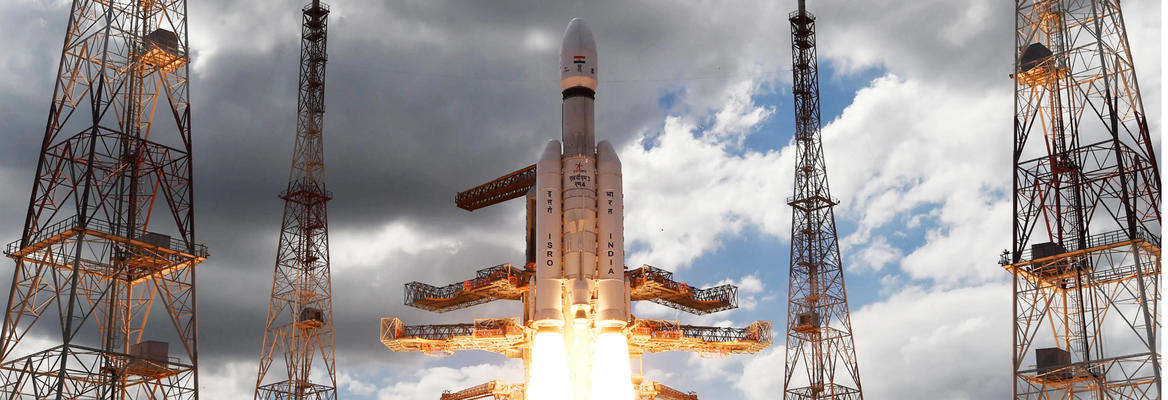India’s impressive and successful landing of Chandrayaan-3 near the South Pole of the Moon ushers in a new era of space exploration. While being driven by Modi’s nationalist politics, and signaling the end of the dominance of space by the US, China and Russia, it also demonstrates the limits of such national projects. International cooperation is the future of space, argues Tony Milligan.
Chandrayaan-3’s soft landing near to the lunar South Pole was a thing of beauty. A gentle and well-controlled arc towards a welcoming surface. There were no last-minute surprises, and few landings have ever seemed so smooth. Certainly not the failed Russian attempt to set Luna-25 down on the surface only a few days earlier. Nor India’s own unsuccessful attempt at a soft touchdown back in 2019, when expectations were not so high.
This success four years later, impressive as it is, does not put India on a par with China and the US as a space superpower. But it does underline its place within the Asian big three: China, India, and Japan, with China being the leader. It also indicates that India will eventually overtake the increasingly dysfunctional Russian space program. Not yet though. Indian funding sits around $1.6bn, roughly, a dollar for every citizen in the country, and less than half of Russia’s space budget. Overall, the successful Chandrayaan-3 mission cost only about the same as the average Hollywood movie, and significantly less than the production costs of Barbie. In the bigger picture, India’s success at landing near the south pole of the Moon indicates a move towards the so-called democratization of space.
___
An assertive ethnic nationalism driving Narendra Modi’s politics has clearly played a role in pushing for this moon landing
___
Its value in terms of promoting inclusion in space activities is difficult to gauge. It is certainly heartwarming to see a successful program run out of a Mission Control where the faces were not mostly white or (harking back to previous, yet not distant, times) almost exclusively male. India’s success is certainly part of the larger process sometimes referred to as the the democratization of space: an increasing number of players and a growing level of diversity. India’s success also challenges the image of space programs as a preoccupation of billionaires and imaginary plans for their eventual escape from Earth. While there remains a great deal of soul crushing poverty among India’s massive population, there has been a significant reduction in recent decades. Investment in advanced technologies is part of this process.
SUGGESTED VIEWING Space, the new Wild West With Mary-Jane Rubenstein
The targeting of the lunar South Pole is also significant, given competition for the resources concentrated there. This area now figures prominently in mission targeting for every nation with a spaceflight capability – a point that underscores the emerging competition for limited accessible space resources. An assertive ethnic nationalism driving Narendra Modi’s politics has clearly played a role in pushing for this moon landing, as a way of signaling to the world India’s place among the major players in advanced technologies, and a contender for taking advantage of space’s resources.
Of course, given the current funding levels there is a solid upper limit upon what India can achieve. We are not about to see the launch of a new India space station. In a sense, the secret to India’s success is budget limitation, and the way in which it focuses attention upon a limited number of achievable but noteworthy goals.
___
That higher price tag for further space exploration will rapidly push India towards greater co-operation.
___






















Join the conversation